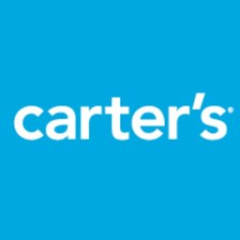Not everyone needs to save for retirement.
This is of interest to Canadian Boomers, but there is also information that might be of interest to those in the United States, Britain, Australia and New Zealand. Some Canadians will have enough income to fund their postwork lives without ever setting aside a dime in their own savings accounts. How do you know whether you’re one of them?
The answer hinges on how much you’ll get automatically from the retirement income sources you build up by living and working in Canada
A target to aim for: The Organization for Economic Co-operation and Development (OECD) tracks retirement income data across its 34 member countries – and has established a “target replacement rate” for retirement income.
According to the OECD, retirees should aim to have 60 per cent of their gross pre-retirement income once they hang up their lunch buckets or turn in their office keys in order to maintain their standard of living as they age.
Across the OECD, the average gross replacement rate for the worker earning an average income is about 54 percent.
In Canada, retirees can typically expect to receive guaranteed lifetime income from Old Age Security (OAS), the Guaranteed Income Supplement (GIS) and the Canada Pension Plan (CPP), in addition to any other workplace pension income they might also receive.
A focus on retirement income, not retirement savings
Looking at Canada, the United States, Britain, Australia and New Zealand – collectively known as the Anglo-Saxon economies – retirees earning the average income can expect to receive between about one-third (in Britain) to one-half (in Australia) of their working income from guaranteed pensions once they hit retirement.
The OECD calculated these percentages by adding up the income from government and mandatory private pensions (such as CPP in Canada) and comparing it with earnings in member countries.
What if you aren’t earning the average income, but something less – or more? Here’s where the numbers get interesting: If you earn a lot more than the average income before retirement, you can expect to get a lot less, in percentage terms, of guaranteed lifetime pensions in retirement.
If you earn half of the average income, you might have 80 percent or more of your working income replaced in retirement from the mandatory public and private sources that you can’t outlive.
On the other side of the ledger, however, the replacement rate from guaranteed sources drops off significantly: Retirees earning one-and-a-half times the average income might need to replace roughly 75 percent or more of their preretirement income to hit the recommended target.
So many of us are saving enough, here are some interesting stats from CBC News. They have compiled a number of important figures on retirement and financial planning in Canada. All figures are from Statistics Canada unless otherwise indicated.
Saving with Registered Retirement Savings Plans...
5,953,370 — number of Canadians who contributed to an RRSP in 2011 (down slightly from 5,956,010 in 2010).
24% — percentage of eligible tax filers who contributed to an RRSP in 2011 (down from 26% in 2010).
$34.4 billion — total RRSP contributions in 2011 (up from $33.9 billion in 2010).
$772.5 billion — total amount Canadians were entitled to contribute to RRSPs as of 2011.
$683.6 billion — total unused RRSP contribution room as of 2011 (accumulating since 1991).
22.7 million — number of Canadians with RRSP contribution room in 2011.
$2,830 — median RRSP contribution in Canada in 2011 (up from $2,790 in 2010).
$4,750 — highest median RRSP contribution in 2011 (Nunavut).
$2,310 — lowest median RRSP contribution in 2011 (Manitoba).
$775 billion — the total value of assets in Canadian RRSPs in 2011 (down from in $782 billion in 2010), according to Investor Economics.
$22,970 — maximum allowable RRSP contribution per person for the 2012 tax year.
$301,478 — amount in an RRSP at age 65 if a person started contributing $2,000 every year from age 25 (assuming five per cent compound annual growth and 1.5 per cent inflation), according to the Fiscal Agents investment calculator.
$158,888 — amount in an RRSP at age 65 if a person started contributing $2,000 every year from age 35 (assuming five per cent compound annual growth and 1.5 per cent inflation), according to Fiscal Agents.
$75,080 — amount in an RRSP at age 65 if a person started contributing $2,000 every year from age 45 (assuming five per cent compound annual growth and 1.5 per cent inflation), according to Fiscal Agents.
...or Tax-Free Savings Accounts
$73.9 billion — value of tax-free savings accounts in Canada as of June 2012 (up from $54.4 billion the year earlier), according to data from the consulting firm Investor Economics.
10 million — number of TFSAs in Canada as of June 2012 (up from 8.56 million the year earlier), according to Investor Economics.
$7,400 — average account holding for TFSA as of June 2012 (up from $6,354 the year earlier), according to Investor Economics.
$5,500 — annual contribution limit for 2013, an increase from the $5,000 annual limit that has been in place since the accounts were created in 2009.
$25,500 — The maximum amount you can put into a TFSA during 2013 if you've never contributed before and were 18 or older in 2009

"
Articles from Royce Shook
View blog
Managing and accepting change can be a difficult but inevitable aspect of life. As we age, the pace ...

My thanks to my cousin Irene for this and she received it from Karen · The telephone rang. · It was ...

The fact that people tell others they feel or are younger is called subjective ageing. Subjective ag ...
You may be interested in these jobs
-
Financial Advisor in Ottawa, ON
Found in: Talent CA C2 - 1 day ago
Co-operators Ottawa, Canada Full timeCompany: CGIC/Co-operators · Department: Retail Sales · Employment Type: Regular Full-Time · Work Model: Office Based · Language: Fluent in English is required, French is an asset · Job Grade: 0-Not Applicable · For More Info Contact: Trina Jimmo <> · The Opportunity · As ...
-

Food and Beverage Coordinator
Found in: beBee Professionals CA - 5 days ago
Direct apply
beBee Professionals Mississauga, Canada Home Catering Services FreelancebeBee Professionals is looking for a Food and Beverage Coordinator to join our team in Mississauga. The successful candidate will be responsible for the coordination of all food and beverage services, including menu planning, ordering, and inventory management. · The ideal candid ...
-

Superviseur (PT) - CR1126
Found in: beBee S2 CA - 3 weeks ago
Carters Barraute, Canada TEMPORARYEmployee Type: · Regular If you area CURRENT Carter's employee, you MUST apply through the Internal Career Link within the My Career & Performanceapp in. Do not apply using the below external application. Carter's, Inc. is the largest branded marketer in North America of apparel ...

Comments